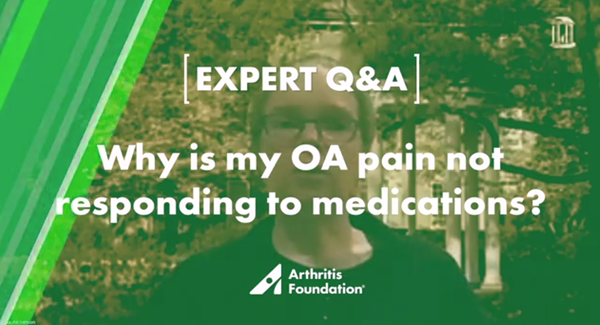Comparing Pain Meds for Osteoarthritis
Exercise and weight loss are the best ways to beat osteoarthritis (OA) pain. But you may want to try other methods too. These include creams you apply to your skin (topicals), pills and joint injections. Knowing the pros and cons of these treatments can help you make the right choice.
Topicals
Before you try pills, experts say you should try topical nonsteroidal anti-inflammatory drugs (NSAIDs) for your OA pain. These come by prescription liquids (Pennsaid) and patches (Flector). Gel (Voltaren) is now available over-the-counter without a prescription. Studies show they can relieve knee pain just as well as pills, but with fewer side effects.
Other over-the-counter arthritis creams and patches include ingredients such as capsaicin, camphor, menthol and lidocaine. They can be used for as long as needed.
Pills
Nonsteroidal Anti-Inflammatory Drugs
NSAIDs are the most effective oral medicines for OA. They include ibuprofen (Motrin, Advil) naproxen (Aleve) and diclofenac (Voltaren, others). All work by blocking enzymes that cause pain and swelling.
The problem is that some of those enzymes also help blood to clot and protect the lining of your stomach. Without them, you can bruise easily, develop ulcers and may even bleed in your intestines. NSAIDs also increase your chance of heart attack, stroke and heart failure. The risk increases the longer you use them and the more you take.
Celecoxib (Celebrex) is an NSAID that’s less likely to cause gastrointestinal bleeding, but it can cause heart problems.
You and your doctor should weigh the benefits and risks of NSAIDs.
Acetaminophen
For years, doctors recommended acetaminophen (Tylenol, others) for OA. But recent studies suggest that acetaminophen does little for OA pain. The American College of Rheumatology (ACR) and Arthritis Foundation (AF) treatment guidelines released in 2020 don’t recommend it unless you can’t use NSAIDs. But it may help OA pain for some people. Acetaminophen can harm your liver, so never take more than prescribed and only use it as needed.
Injections
Injections directly into the joint are an option for OA pain.
- Corticosteroids. Injections of corticosteroids (often called steroids) reduce swelling and provide pain relief for a few days to a few months. But side effects can occur, and you can only get the shots three or four times a year. After the first shot, the others may not work as quickly or as well.
- Hyaluronic acid (HA). This acts like the fluid that lubricates your joints. While research is mixed on whether HA shots really help, experts say they rarely cause harm. Pain relief may last up to six months for the knee or shoulder. ACR/AF guidelines do not recommend HA injections because proof that they work is limited. However, they say it should be up to the doctor and patient to discuss and decide.
Other injections, including platelet-rich plasma (PRP) and stem cells, have become popular in recent years. PRP is a concentrated form of your own blood. It contains natural chemicals that may reduce inflammation and speed healing. In stem cell treatment, these special cells are collected from your fat and then injected into your painful joint. The ACR/AF guidelines recommend against both of these treatments. The procedures are not well standardized and their effectiveness is not yet proven. Prolotherapy is an older treatment in which a sugar solution is injected into joints. Its usefulness is doubtful and the ACR/AF guidelines do not recommend it.
Do not rely on medicine for pain relief. Always try non-drug options, such as exercise, weight loss, physical therapy, and hot and cold packs. Learn more about ways to manage pain.
Around the clock and all year long, we’ve got you covered with unique pain management tools and resources you won’t find anywhere else.
Sources
Donald Miller, PharmD
Kolasinski SL, et al. 2019 American College of Rheumatology/Arthritis Foundation Guideline for the Management of Osteoarthritis of the Hand, Hip, and Knee. https://onlinelibrary.wiley.com/doi/full/10.1002/art.41142
Together, we are conquering arthritis.
The resources we provide and the progress we make are only possible because of people like you. Your gift will help provide our community greater access to care, support and resources and fund groundbreaking research that brings us closer to a cure. Arthritis is relentless. So are we. Please give today!

Stay in the Know. Live in the Yes.
Get involved with the arthritis community. Tell us a little about yourself and, based on your interests, you’ll receive emails packed with the latest information and resources to live your best life and connect with others.


